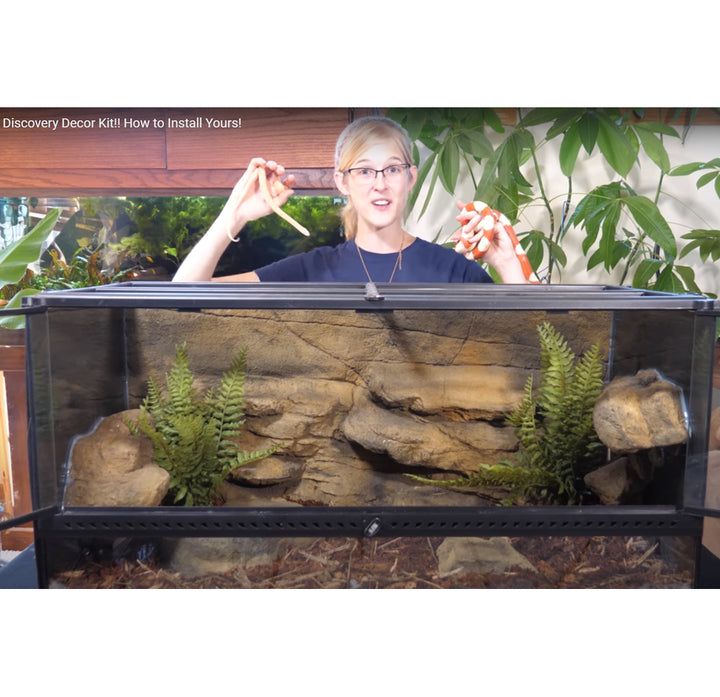Introduction
Decorating a reptile tank is not just about aesthetics; it’s crucial for the well-being of your pet. A well-decorated tank can mimic a reptile’s natural habitat, providing them with the comfort and stimulation they need. As a reptile enthusiast with years of experience, I’ve learned a lot about choosing the right decorations that cater to both the needs of the reptiles and the visual appeal of the tank. In this comprehensive guide, you’ll find everything from types of decorations to maintenance tips, ensuring your reptile lives a happy and healthy life.
Why Decorations Matter
Reptile tank decorations serve multiple purposes:
- Provide hiding spots for security and stress reduction
- Encourage natural behaviors such as climbing, burrowing, and basking
- Enhance the overall aesthetics of the tank, making it visually appealing
- Help maintain humidity and temperature levels when strategically placed
Types of Reptile Tank Decorations
Natural Decorations
Natural decorations closely replicate a reptile’s native environment. They include:
- Live Plants: Such as pothos and spider plants.
- Natural Wood: Driftwood and branches.
- Rocks and Stones: Various sizes for climbing and basking.
Artificial Decorations
These are man-made and often designed to mimic natural elements. Examples include:
- Synthetic Plants: Easy to care for and durable.
- Caves and Hides: Clay or resin options available.
- Background Panels: To create depth and enhance the visual appeal.

Choosing the Right Decorations for Your Reptile
When selecting decorations, consider the following factors:
- Species-Specific Needs: Different reptiles have varying habitat needs.
- Tank Size: Ensure decorations do not overcrowd the space.
- Ease of Maintenance: Opt for materials that are easy to clean.
Comparing Natural vs. Artificial Decorations
| Feature | Natural Decorations | Artificial Decorations |
|---|---|---|
| Realism | High | Medium |
| Maintenance | Requires care | Low maintenance |
| Durability | Varies | High |
| Cost | Often higher | Varies widely |

Creating an Ideal Environment for Your Reptile
In my experience, creating a harmonious environment can significantly contribute to your reptile’s health:
Substrate Considerations
The substrate you choose can impact the overall aesthetic and health of your tank. Here are some popular options:
- Reptile Carpet: Easy to clean and prevents impaction.
- Coconut Fiber: Biodegradable and retains moisture.
- Sand: Aesthetic, but can lead to health issues if ingested.
Plant Placement and Lighting
When incorporating plants:
- Position them to provide shade and hiding spots.
- Use UVB lighting to promote plant health and mimic natural sunlight.

Pros and Cons of Different Decorating Styles
Natural Decor
- Pros:
- Enhances the overall health of your reptile.
- Creates a more realistic habitat.
- Cons:
- Higher maintenance required.
- Potential for pests or mold.

Artificial Decor
- Pros:
- Low maintenance.
- Durable and long-lasting.
- Cons:
- Less realistic environment.
- May not provide the same benefits as live decor.
Maintaining Your Reptile Tank Decorations
Maintenance is key to ensuring your decorations stay clean and effective:
Cleaning Natural Decorations
For natural elements, regular cleaning is essential to avoid mold and debris. Here’s how:
- Soak decorations in warm water with reptile-safe soap.
- Rinse thoroughly and dry before placing back in the tank.

Cleaning Artificial Decorations
Artificial decorations are generally easier to clean:
- Wipe down surfaces with a damp cloth regularly.
- Occasionally disinfect with reptile-safe solutions.
Personal Experiences: My Favorite Tank Decorations
Over the years, I have tried various decorations for my reptiles. Here are a few that stand out:
Live Plants
Using live plants like pothos has transformed my tank setup. Not only do they add beauty, but they also help with humidity control. I’ve noticed my reptiles thrive more with plants, as they provide excellent hiding spots.

Custom Backgrounds
I created a custom background using foam and paint to mimic a rocky desert landscape. It was a fun project, and the reptiles seem to enjoy the depth it adds to their space.
FAQs About Reptile Tank Decorations
What are the best materials for reptile tank decorations?
The best materials are natural wood, rocks, and live plants. However, ensure any materials are safe and non-toxic for your specific reptile species.
How often should I change my tank decorations?
There’s no set rule, but it’s great to refresh decorations every 6-12 months or when you notice wear or algae buildup.
Can I use regular household items as tank decorations?
Be cautious! Avoid items like untreated wood, painted surfaces, or anything that might leach toxins into the tank. Stick to reptile-safe materials.
Will my reptile be okay with new decorations?
Generally, reptiles will adapt to new decorations, but it helps to introduce them gradually, allowing your pet to explore at their own pace.